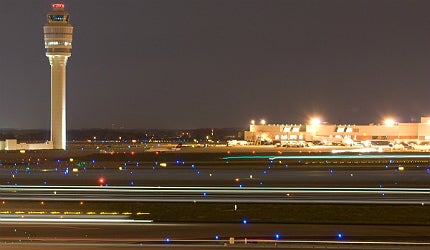
Click here to view our updated list of the top 10 busiest airports in the world
Worldwide passenger traffic is experiencing slow but steady growth amid tough economic conditions, although the economic downturn could prompt a gradual transformation in the rankings of the world’s busiest airports.
While previously unassailable regions such as North America and Europe have borne the brunt of sluggish post-recession traffic levels, emerging markets like the Middle East and Asia-Pacific are recording much more positive growth, boosting the worldwide stats and setting the stage for a shake-up at the top.
“For the most part, the story remains the same with respect to air travel,” said ACI World’s economics director Rafael Echevarne in July.
“Regardless of the downside risks in the major economies of Europe, it continues to be business as usual for the international traveller. When we look at the aggregate sum of international passenger traffic over the last twelve months, we see a growth rate of almost six percent year over year, which is impressive given the economic environment.”
The slowly changing composition of the world’s busiest airports is evident in 2012 so far, which, while stable for the most part, sees traditionally strong performers such as Frankfurt Airport and Hong Kong International muscled out of the top ten by some thriving newcomers, with the likes of Singapore Changi and Guangzhou International not far behind. Here we present the ten busiest airports in the world, based on Airports Council International’s passenger traffic statistics for the first five months of 2012.
Hartsfield-Jackson Atlanta International Airport, US
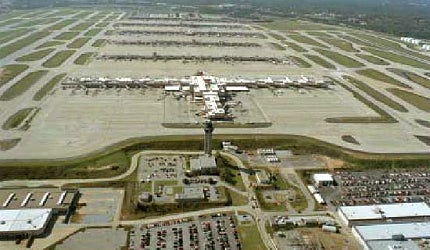
Hartsfield-Jackson Atlanta International Airport
The US’s pre-eminent air hub will almost certainly maintain its long-held position as the world’s busiest airport in 2012, with more than 38 million passengers recorded between January and May.
Hartsfield-Jackson’s position, held despite serving a region of the US that is comparatively unimportant, is secure as the airport is a key transfer point for the country’s massive domestic passenger traffic – North America had more than 80,000 domestic air travellers in May 2012, while its closest competitor, Asia-Pacific, was a distant second with 48,669.
Beijing Capital International Airport, China
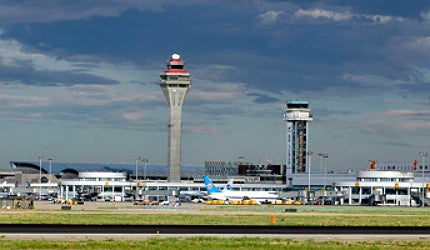
Beijing Capital International Airport
Beijing’s main international airport has occupied the runner-up spot in passenger traffic since ousting London Heathrow in 2010.
The 32.6 million passengers the airport handled in the first five months of 2012 represents a solid 4.9% increase on the same period last year, although the double-digit growth it experienced in 2009 and 2010 now seems to be a thing of the past as its stats fall into line with other established international airports.
London Heathrow Airport, UK
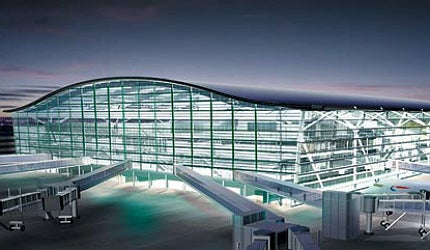
Terminal 5 at Heathrow Airport
Heathrow Airport’s 27.3 million passengers might only represent a 2.4% increase in January-May 2012, but it has reinforced its reputation as a consistently successful airport in a region that has been struggling to achieve even the most modest growth.
In the long-term future, the UK’s coalition government has reportedly put the airport’s long-gestating third runway back on the table to improve capacity, while in the short-term, it has been revealed that the recently-completed London Olympics had a negative effect on Heathrow’s passenger traffic in July, with a 4.4% year-on-year decrease as Britons stayed at home to enjoy the games.
Chicago O’Hare International Airport, US
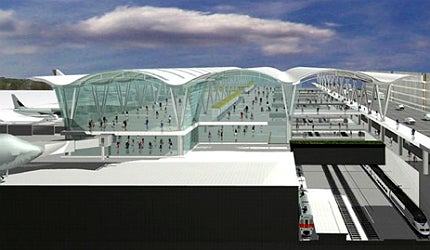
Chicago O’Hare
Chicago O’Hare has spent the last few years swapping back and forth with London Heathrow Airport in terms of passenger traffic.
This year is shaping up to be the two airports’ closest race yet, with Chicago’s 26.6 million passengers less than a million away from Heathrow’s total as of May 2012.
As for growth, the two airports are similarly well-matched, with Chicago’s 2.3% traffic increase just 0.1% away from Heathrow’s performance.
Haneda-Tokyo International Airport, Japan
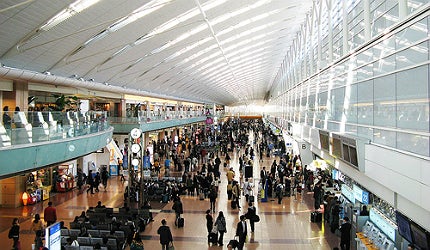
Haneda Airport Terminal 2
Haneda Airport’s strategic position in the burgeoning Asia-Pacific regionhas seen it post an 11.9% passenger traffic increase up to May 2012, and with 26.2 million passengers it is starting to close the gap with Chicago O’Hare. If it can manage anything close to these growth levels up until December, then 2012 could be a landmark year for Asia’s second-busiest air hub.
Los Angeles International Airport, US

Los Angeles International Airport (LAX) relative to surrounding airports
LAX’s position in the passenger traffic rankings has remained steady with 25.1 million passengers served from January-May 2012, a four percent increase over the same period last year.
But with a $4.1bn ongoing modernisation programme now underway to replace the airport’s central utility plant, expand the Bradley terminal and add 18 new international gates, the short-term effects of these works, which will reportedly restrict road and pedestrian access to the airport, remain to be seen.
Paris Charles de Gaulle Airport, France
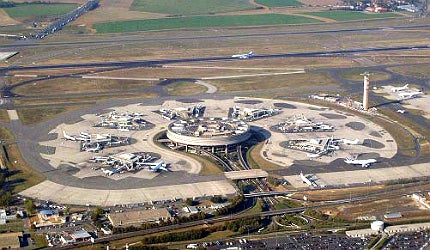
Terminal one is a complex circular building with seven satellites
Paris-CDG’s 24.1 million passengers in the first five months of 2012 represent a three percent year-on-year increase, a significantly better performance than its major European rival Heathrow.
The home of Air France is a world-leading hub for international connections, providing more than 25,000 connections every year. This is a strength that CDG’s operator Aéroports de Paris intends to capitalise on with the newly-opened S4 boarding satellite at Terminal 2E.
S4 has an annual capacity of 7.8 million passengers and is dedicated to international travellers. According to Air France, the new facility “increases the attractiveness of Paris-Charles de Gaulle airport in terms of long-haul traffic and the quality of service offered to passengers”.
Dallas-Fort Worth International Airport, US
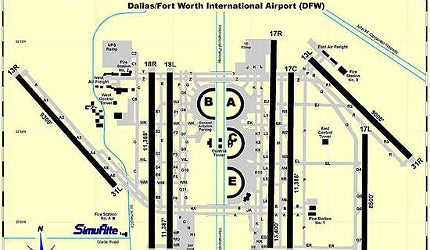
Detailed picture of Dallas / Fort Worth International Airport layout
Another major nexus for US connections, Dallas-Fort Worth has been gradually edged towards the bottom end of the top ten since 2000, when it was the fifth-busiest airport in the world.
But a 3.7% year-on-year increase to 23.4 million passengers up to May 2012 is an impressive result for the airport, especially when compared to its tepid 1.6% growth rate for the whole of 2011. The DFW Airport Board is looking to secure the airport’s position with the latest in a series of upgrade and renovation programmes.
Suvarnabhumi Airport, Thailand
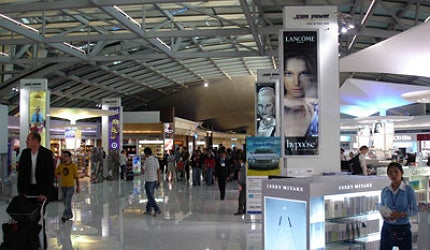
Suvarnabhumi Airport
Suvarnabhumi Airport, serving Bangkok in Thailand, is one of the Asia-Pacific region’s recent success stories in terms of passenger traffic, following up 2011’s double-digit growth with a 14.1% increase to 23.3 million passengers between January and May this year.
On track to move from 16th last year to ninth in 2012, its star should continue to rise in the passenger traffic rankings, but the challenge for the airport’s operator is now to expand its capacity quickly enough to service the skyrocketing demand.
A $1.9bn expansion project was announced earlier this summer, the completion date of which has now been brought forward from 2017 to March 2016.
Dubai International Airport, United Arab Emirates
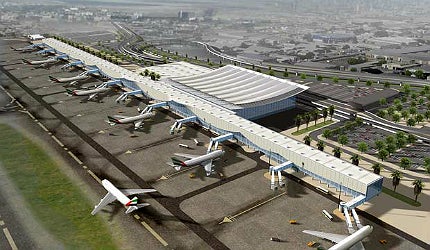
Dubai International Airport (Phase 2)
The Middle East’s busiest airport has accelerated into a 13.2% growth rate in the first five months of the year, recording 23.2 million passengers to displace Hong Kong at the tail end of the passenger traffic top ten.
Strong growth during the last few years has created the confidence to move forward with a number of expansion schemes at Dubai International, which are expected to increase its capacity from around 50 million passengers a year to a predicted 70 million by 2016, and to 100 million by 2025.
Related content
Artificial intelligence and predictive modelling: can an airport think?
Could tomorrow’s airport systems predict passenger flows in advance, in order to alleviate the chaos of day-to-day operations?
Brazil’s airport expansions: ready for take-off?
In the run-up to two major sporting events, Brazil’s airports are undergoing their biggest makeover in history.
The world’s longest runways
The rising popularity of mammoth aircraft has led to a drastic need for runways long enough to cater for them.

